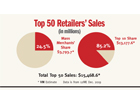
By Marge Axelrad and Mark Tosh
Monday, May 18, 2020 12:28 AM
NEW YORK—Comparable to prior VM Top 50 reports, there was a concentration of sales among the 2020 VM Top 50 U.S. Optical Retailers, accounting for an estimated $15.7 billion of a $37.5 billion total U.S. market for the 12 months ending Dec. 2019. The Top 10 optical retailers collectively comprise 85.4 percent of the Top 50’s collective U.S. optical retail sales, meaning that retail groups ranked numbers 11 through 50 comprise just under 15 percent of that remaining Top 50 group.
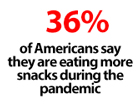
By Staff
Friday, May 15, 2020 3:34 PM
NEW YORK—While many things about the COVID-19 situation are unsettled and even mysterious, one aspect does seem to be true for most Americans: stuck at home, we can’t help but find more time for snacking.
Since mid-March—when the World Health Organization (WHO) first declared COVID-19 a pandemic—many Americans are reaching for potato chips and other treats in the pantry. A
YouGov survey released earlier this month of more than 9,000 American adults showed that more than one-third (36 percent) of the country has been snacking more during the pandemic.
Younger Americans, ages 18-24, are slightly more likely to be snacking more (45 percent), as are those ages 25-34 (44 percent). The survey also shows women (39 percent) are more likely than men (32 percent) to be snacking more.
As many Americans remain under shelter-in-place orders, many are suffering from boredom. According to ongoing YouGov Profiles data, 61 percent of Americans say they sometimes eat out of boredom, not out of hunger.
This extra snacking has proven to be a boon for the potato chip category, as the number of Americans likely to purchase Lay’s brand chips has increased by 35 percent, according to YouGov’s report.
Right now, 18 percent of the American population say they’re likely to purchase a bag of Lay’s, the highest that figure has been in three years.
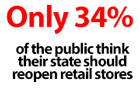
By Staff
Thursday, May 7, 2020 4:35 PM
A new
Washington Post-University of Maryland poll has found that there's widespread opposition to reopening businesses across the U.S. as governors ease restrictions and loosen lockdowns, according to a recent story from Statista.com. Even if businesses do get up and running quickly, public reluctance to shop and dine could prove a major obstacle to restarting the economy.
That's without even considering a further
spike in new infections and deaths. The research found that only 56 percent of the U.S. public feel comfortable going grocery shopping and the share is even lower for clothes shopping and dining out at just 33 percent and 22 percent respectively.
The poll specifically asked Americans about whether their states should open eight different types of business. Golf courses had the highest support for reopening at 41 percent which is probably understandable given that they guarantee wide open space outdoors with plenty of opportunities for social distancing. People are more apprehensive about businesses that involve closer contact with support for retail stores reopening at 34 percent and hairdressers at 31 percent. 29 percent of those polled also want their states to reopen gun stores.
Click here to read the full story from Statista.com.
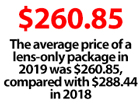
By Staff
Monday, May 4, 2020 10:33 AM
The annual L&T Lens Usage survey in the May issue of
20/20 magazine provides a useful benchmark for independent eyecare practitioners to compare their spectacle lens and Rx sun lens sales against. The data complied here, based on input from 537 independent optical retailers, also sheds light on how these ECPs dispense certain lenses, such as digital progressive and single vision lenses that may require personalized measurements. Three-year comparative data is included wherever possible to show how sales of various products are trending.

By Staff
Thursday, April 30, 2020 3:33 PM
With some cities and communities still under stay-at-home mandates across the country and many schools and offices closed for the foreseeable future, it’s not surprising that COVID-19 would impact Mother’s Day plans this year. However, at first glance, the latest data from NRF and Prosper Insights & Analytics annual Mother’s Day survey seems to tell a different story.
The vast majority (71 percent) of consumers are social distancing and are concerned about the pandemic’s impact on their personal health and financial stability. At the same time, consumers are planning to spend as much, if not more, on Mother’s Day than they have in the past. An optimistic 46 percent still want to plan a traditional special outing, brunch or other activity. Are consumers overly hopeful that things are ready to return to normal? Or is Mother’s Day getting a coronavirus-inspired boost? To understand what is driving these seemingly contradictory trends, NRF took a closer look at what is shaping consumers’ attitudes and behavior right now.
1. Mother’s Day may be more meaningful this year. For many consumers, the coronavirus has put a spotlight on opportunities to celebrate and show their loved ones they care. In fact, 78 percent say that celebrating Mother’s Day is important to them this year, given the current state of the pandemic. And this sentiment shows up in spending plans as well: On average, consumers say they plan to spend 205 on cards, special meals and other gifts for mom, approximately $8 more than last year.
2. All things being equal, consumers want to return to normal. Even in the midst of the current uncertainty, consumers are hopeful their daily lives and routines will return to normal in time for Mother’s Day. While fewer consumers say they are planning traditional outings, 46 percent still want to celebrate mom with a special meal, day out or other activity.
3. Social distancing means thinking outside the bouquet. While consumers are hopeful, they are also realistic about the limitations they are facing right now. Two-thirds (66 percent) admit they are likely to celebrate virtually this year.
Click
here to read the full story from the National Retail Federation.
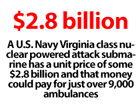
By Staff
Tuesday, April 28, 2020 1:27 PM
In an April 27 post on
Statista.com, data journalist Niall McCarthy called attention to a new report on global military expenditure by the
Stockholm International Peace Research Institute (SIPRI) which shows that $1.9 trillion was spent on military hardware in 2019.
McCarthy poses an interesting question. “Given the threats presented by geo-political tensions, regional conflicts and terrorism, not to mention the vital obligations of disaster relief and humanitarian work, there is plenty of justification for a large military budget. However, with COVID-19 now responsible for hundreds of thousands of deaths across the world, what would happen if large portions of military budgets had been set aside in preparation for a pandemic such as COVID-19?”
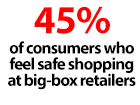
By Staff
Friday, April 24, 2020 5:31 PM
NEW YORK—A new
First Insight survey has uncovered consumer sentiment around feelings of safety when visiting several store formats as states nationwide consider how best to reopen while also protecting against further coronavirus spread.
According to First Insight, the majority of consumers surveyed would feel safest shopping in grocery stores (54 percent) and drugstore chains (50 percent). Forty-five percent of consumers would feel safe shopping at big box retailers, and 43 percent saying the same when shopping at local small businesses and warehouse clubs, respectively.
Malls were ranked lowest with only 33 percent of respondents saying they would feel safe shopping in these locations, according to First Insight’s announcement of the survey findings.
An infographic highlighting the survey’s findings is available to
download here.
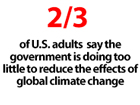
By Staff
Wednesday, April 22, 2020 4:13 PM
It’s been 50 years since the first
Earth Day on April 22, 1970. The event—a “teach-in on the environment” launched by U.S. Sen. Gaylord Nelson of Wisconsin—called attention to the aftermath of a massive oil spill off the Santa Barbara coast the prior year. The protest helped set the political stage for a decade of new regulations, including the Clean Water Act and the Endangered Species Act.
While
the event focuses on a range of environmental concerns, climate change has loomed especially large over the past decade, sometimes sparking major protests urging more action to reduce it and its effects.
This year’s Earth Day comes at a unique moment. People in many countries remain under stay-at-home orders to
help mitigate the spread of the coronavirus, and the resulting shifts in transportation, industrial activity and consumer habits are leading to a decline in
carbon emissions. Whether such declines will be temporary or lasting remains unclear.
For Earth Day 2020, Pew Research Center takes stock of U.S. public opinion about global climate change and the environment, based on their surveys.
Click here to read the full story from Pew Research.

By Staff
Monday, April 20, 2020 12:31 PM
NEW YORK—An overwhelming majority (91.7 percent) of ECPs expect to reopen their practices once the coronavirus pandemic eases and reopening is permissible, but they also expect to space out scheduling, require gloves and masks for employees and establish some patient screening measures, according to the latest
Jobson Optical Research ECP Coronavirus Study. The survey of ECPs, which marked the sixth wave of the Jobson Research effort to understand the impact of COVID-19 on the optical profession, was completed during the April 16-19 period last week.
Click to view a PDF of the full survey results.
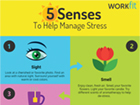
By Jaleesa Baulkman
Monday, April 20, 2020 12:42 AM
April is Stress Awareness Month, an annual designation that’s been observed since 1992. It’s a time when many health care professionals increase public awareness about the causes of stress and ways stress can be treated or reduced. Stress can lead to emotional and physical problems such as depression, panic attacks, high blood pressure, arthritis and skin conditions. It can also lead to many stress-related eye issues like blurry vision, watery or dry eyes, eye twitching, dizziness and eye strain.
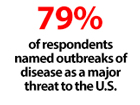
By Staff
Wednesday, April 15, 2020 3:53 PM
Americans continue to see many international issues—including terrorism, the spread of nuclear weapons and cyberattacks—as major threats to the well-being of the nation. But as the COVID-19 pandemic
sweeps the globe, the greatest threat named by Americans in a March 3-29
Pew Research Center survey is the spread of infectious diseases.
Nearly all U.S. adults (98 percent) say this is at least a minor threat, with roughly eight-in-ten (79 percent) naming outbreaks of disease as a major threat to the country. This is 27 percentage points higher than the level of concern about infectious disease in the midst of
West Africa’s Ebola outbreak in 2014.
But infectious disease is not the only issue where Americans see a growing threat. Concerns about China and the condition of the global economy have also been on the rise. Click
here to read the full story from Pew Research Center.
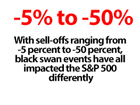
By Staff
Monday, April 13, 2020 12:48 PM
The Advisor Channel, a new website founded by New York Life Investments and Visual Capitalist, recently posted an analysis of the COVID-19 pandemic that describes it as a “Black Swan”: a rare, unexpected event that could have a severe effect on the stock market. As the analysts observed, “Few investors could have predicted that a viral outbreak would end the longest-running bull market in U.S. history. Now, the COVID-19 pandemic has pushed stocks far into bear market territory.”

By Staff
Wednesday, April 20, 2016 12:24 AM
RANCHO CORDOVA, Calif.—Although many parents worry about how much time their teenagers spend glued to their smartphones, tablets and other digital devices, most are unaware of how it affects their children’s vision and overall health.
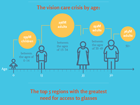
By Staff
Wednesday, October 7, 2015 11:26 PM
In conjunction with World Sight Day, OneSight and Deloitte are announcing the results of a recent study which determined 1.1 billion people need glasses but lack access. OneSight collaborated with Deloitte to determine how accessible vision care and quality eyewear are around the world.